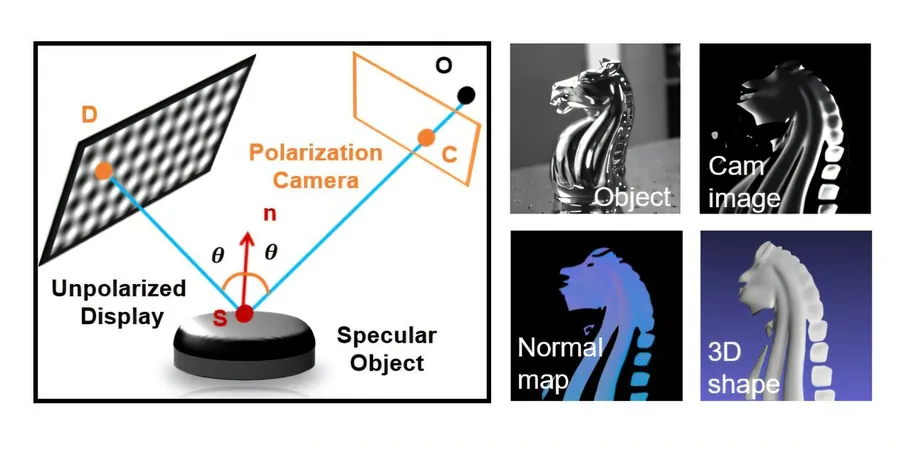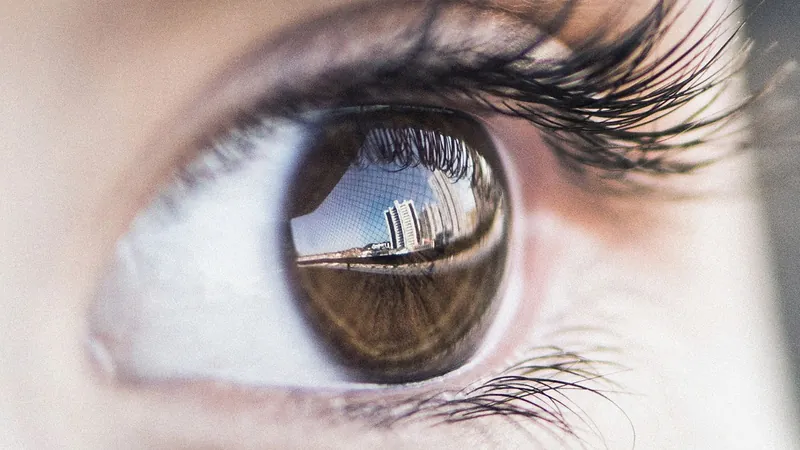
Revolutionizing 3D Imaging: A Game-Changer for Reflective Surfaces
2025-03-27
Author: Ming
Accurately capturing the 3D shapes of mirror-like surfaces is a crucial challenge in various fields, including industrial inspection, medical imaging, virtual reality, and cultural heritage preservation. Imagine stepping into a funhouse mirror maze; the difficulty in discerning the true shape and distance of reflective objects mirrors the scientific hurdles faced by researchers in optical metrology and computer vision.
Despite long-standing interest in this domain, existing techniques often fall short of being universally applicable, limiting their potential impact across disciplines. However, groundbreaking research from the University of Arizona's Computational 3D Imaging and Measurement (3DIM) Lab, published in the journal Optica, is set to change the game.
The researchers have ingeniously merged two established techniques, Phase Measuring Deflectometry (PMD) and Shape from Polarization (SfP), to create a novel 3D imaging method that enhances the accuracy and applicability of measurements on specular surfaces. This innovative approach not only combines the strengths of both methods but also mitigates their individual limitations.
PMD is known for its precision and is widely employed in high-end applications, such as inspecting optical lenses and detecting defects in car chassis. However, PMD's accuracy is often hindered by inherent ambiguity issues, which require prior knowledge about the object or additional hardware, restricting its flexibility for general use. Conversely, SfP boasts notable versatility but suffers from geometric assumptions that can compromise accuracy, relegating it to lower-stakes applications.
In this new technique, researchers leverage the geometrical insights from deflectometry alongside polarization cues, achieving an accurate reconstruction of surface shapes without needing complex setups or specific assumptions regarding the imaging model. Lead researcher Jiazhang Wang describes this as a creative, mathematically rigorous approach, effectively bridging the gap between optical metrology and computer vision.
One of the most exciting advancements from this study is the transition from traditional multi-shot techniques to a single-shot 3D reconstruction process. Traditional methods typically require capturing multiple images, making them highly susceptible to motion artifacts. Wang highlighted, “The slightest movement during this sequence introduces severe reconstruction errors, rendering results unusable.” With the new method, all necessary information can be extracted from a single camera image, paving the way for real-time measurements in dynamic environments.
This leap not only aids in more accurate applications, such as measuring fast-moving components on a production line, but it also signifies a pivotal advancement for next-generation 3D sensors. The research team, including Wang, Willomitzer, and co-author Oliver Cossairt, is thrilled about the practical applications of their innovation.
The implications of this study extend well beyond the "house of mirrors" phenomenon, as Willomitzer noted, emphasizing the lab's dedication to pushing physical and informational boundaries to develop cutting-edge 3D imaging systems. A bright future awaits, where the complexities of 3D imaging on reflective surfaces could revolutionize various industries while enhancing our understanding of visual perception in technology.
Stay tuned for more updates on how this technology could transform everything from manufacturing to artistic restoration!



 Brasil (PT)
Brasil (PT)
 Canada (EN)
Canada (EN)
 Chile (ES)
Chile (ES)
 Česko (CS)
Česko (CS)
 대한민국 (KO)
대한민국 (KO)
 España (ES)
España (ES)
 France (FR)
France (FR)
 Hong Kong (EN)
Hong Kong (EN)
 Italia (IT)
Italia (IT)
 日本 (JA)
日本 (JA)
 Magyarország (HU)
Magyarország (HU)
 Norge (NO)
Norge (NO)
 Polska (PL)
Polska (PL)
 Schweiz (DE)
Schweiz (DE)
 Singapore (EN)
Singapore (EN)
 Sverige (SV)
Sverige (SV)
 Suomi (FI)
Suomi (FI)
 Türkiye (TR)
Türkiye (TR)
 الإمارات العربية المتحدة (AR)
الإمارات العربية المتحدة (AR)